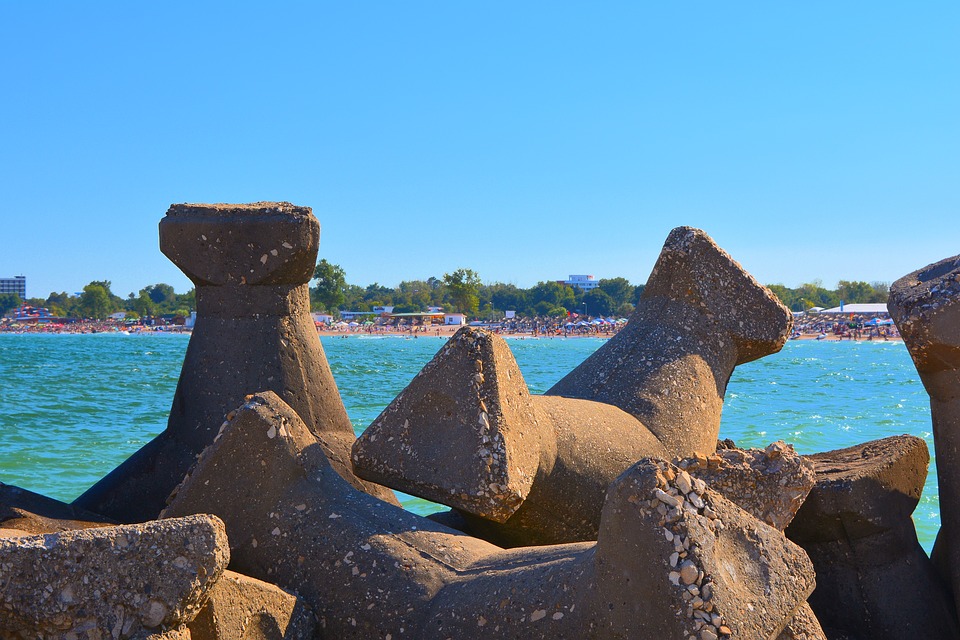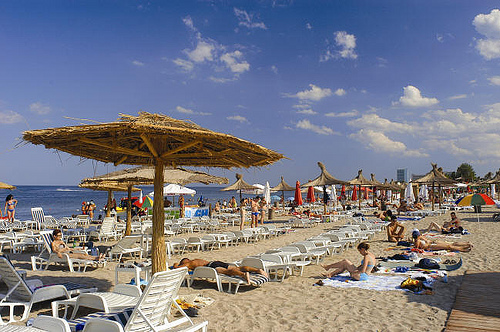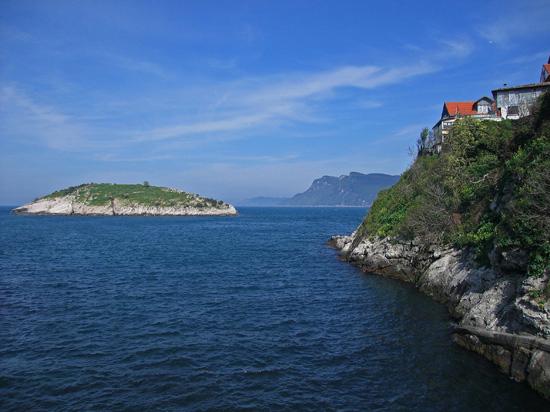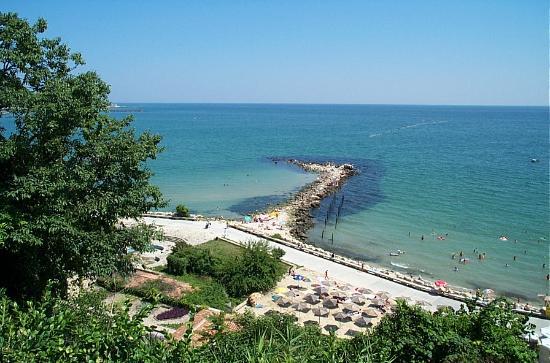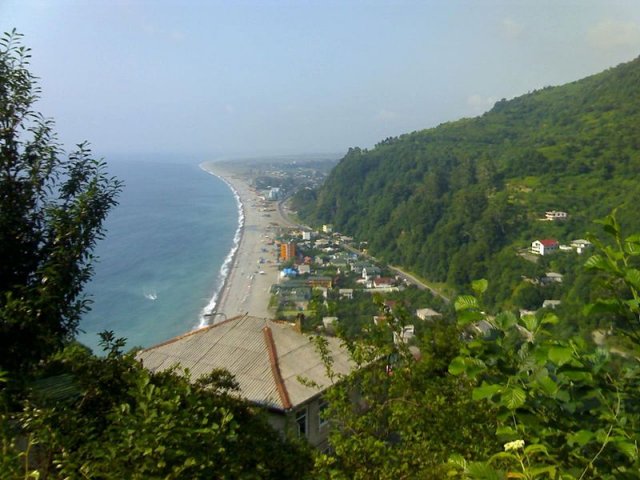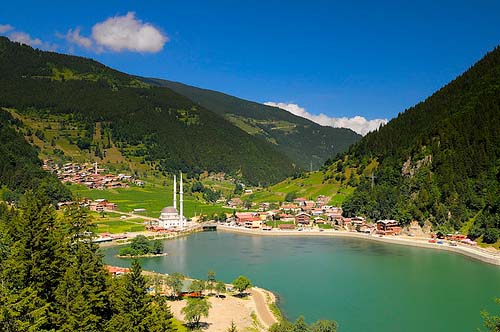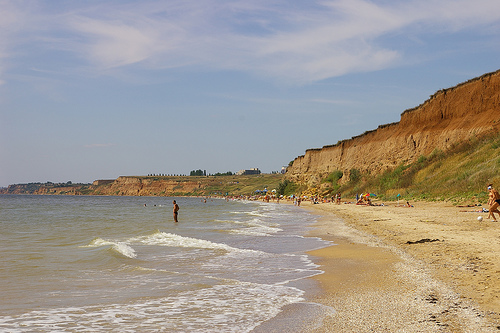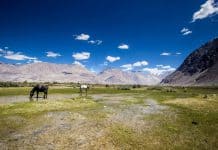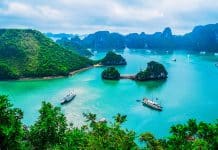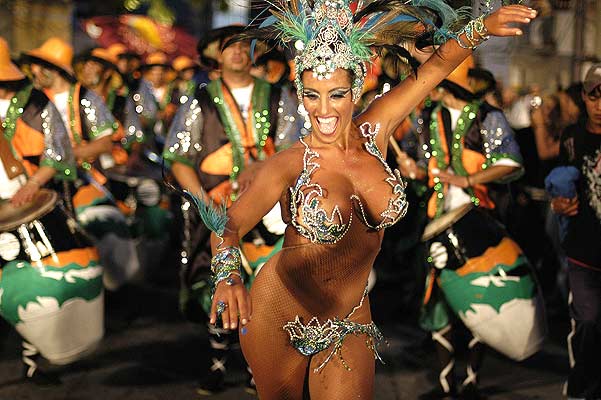On the far frontier of Eastern Europe (or, alternatively, Western Asia) lies a Black Sea whose very name conjures images of dreary skies and icy, tumultuous sea water.
The Black Sea’s moody waves lap against the shores of six different countries — Russia, Georgia, Turkey, Bulgaria, Romania and the Ukraine, and each of these countries has a long and distinct relationship with this historically extremely important but often under-appreciated body of water.
The sweet melancholy that haunts the shoreline during the colder months (i.e., most of the year) is an experience in its own right, but come during the summer season and watch this seasonal sadness transform into sunny glee. (In late July the water even becomes warm enough to swim in!)
But where to go? What to do? The Black Sea is a fascinating but obscure travel destination, and its ancient shores do not find their way onto many travel itineraries — a shame, as it hosts some of the most intriguing cities in the region. Here’s a guide to get you started.
Vama Veche, Romania
Since the days of communism this tiny coastal village on the Romanian-Bulgarian border has been a laid-back, counter-cultural oasis, attracting bohemians from around the region.
During the repressive totalitarian regime of Nicolae Ceausescua, Vama Veche was uncharacteristically tolerated as a retreat for Romanian intellectuals, and it has been popular as a non-mainstream tourist destination ever since.
Today, people walk around barefoot and most summer weekends the beach is filled with campers and their tents, as well as the makeshift bars erected in the sand to make sure they’re properly liquored.
The tourist season opens every year on May 1st with a rock concert, and from then on every weekend, at least until the end of August, thousands of people gather here to drink at the bars, attend impromptu music gigs and party all night on the beach.
Stufstock Music Festival, which was first organized in 2003 as a protest against urban development and mass tourism in the city, closes up the season and features bands from Romania and abroad. In 2005 the festival drew a record crowd of 40,000.
Vama Veche is also famous for its nude beach. Its shoreline is quite clean by Black Sea standards, and the water is warm enough to swim in by late July. If the beach scene is too wild for you, home stays with local residents can be easily arranged upon arrival.
Amasra, Turkey
Amasra is Turkey’s most comely Black Sea town and the perfect place for a few days of relaxation. You shouldn’t expect wild parties in Amasra; although during the summer it draws considerable numbers of vacationers from big cities like Istanbul and Ankara, the atmosphere remains tranquil and mildly conservative.
Amasra’s impressive history stretches back to Homeric times, and was even controlled by the Italian Republic of Genoa for a considerable length of time. Today Amasra is popular among both domestic and foreign tourists and is well-known for its beaches and natural beauty. As mentioned, it is a place to relax, either on the rocks of the city’s harbor, in the bars and cafes beneath Amasra Castle, or along the seafront promenade, where restaurants serve traditional Karadeniz cuisine, such as hamsi, fresh sea bass and mackerel.
Amasra can also be used as a base to explore the dozens of coastal villages along the highway west to Sinop — one of the most scenic roads in the country.
Nesebar, Bulgaria
Sometimes referred to as the “Pearl of the Black Sea” or “Bulgaria’s Dubrovnik,” Nesebar is a UNESCO-protected World Heritage Site that has been continuously inhabited for more than three millennia.
Originally a Thracian settlement known as Menebria, during its long history the town has come under the control of the Greeks, Byzantines, Turks and Bulgarians. Today its beauty and historic legacy has made it one of the most prominent tourist destinations on the Black Sea.
The primary activity for travelers in Nesebar is simply drifting around the cobbled streets and absorbing the beauty of its wooden houses, tiny squares, and churches. Whether built during the Byzantine, Bulgarian or Ottoman era of the city, the churches of Nesebar are a fine example of the Eastern Orthodox architectural heritage. A total of forty churches survive today, which, if you add the churches sunk under water in parts of the old city, mean that it has the most churches per capita in the country.
Batumi, Georgia
Located on the sub-tropical Black Sea coast near the border with Turkey, Batumi is the party capital of Georgia. Vacationers from around the Caucasus region pour into the city during the summer months. It has become justifiably famous for its nightlife, which takes place along the beach-front promenade, where you can party all night in the sand with your new Georgian, Russian, Armenian, Azerbaijani and Turkish friends.
If you’re itching for a culture fix, you can check out the ruins of the Gonio Fortress, which offers some impressive architecture and stunning views of the surrounding area. Perhaps Batumi’s most pleasing activity, however, is a stroll along the seaside Bulvar. However, couples beware — the atmosphere is romantic, but public kissing is prohibited and can be punished with a 50 Lari fine!
Additionally, no visit to Batumi is complete until you try an acharuli khachapuri, a famous khachapuri native to the area. It looks like a canoe of bread of filled with cheese, butter and topped with a raw egg.
Trabzon, Turkey
Trabzon is the most significant major city on Turkey’s northeast coast. With its impressive history and bustling, pedestrian-only streets in the city center, its temperament and atmosphere can be likened to a small-scale Istanbul.
During medieval times, this trading city served as the capital of Empire of Trebizond, which ruled by the Komnenos, a family dynasty that also provided several emperors to the Byzantine throne. Trabzon was also the longest-surviving bastion of the Byzantine empire, having held out against the Ottoman Turks until 1461, nearly a decade after the fall of the capital at Constantinople.
This considerable historic legacy is evidenced in the ancient churches and other monuments scattered throughout the city. Most people, however, come to Trabzon to see the famous Sümela Monastery, a breathtaking rock-hewn monastery that juts out from a steep cliff in the forests south of the city. The complex was built in the fourth century and was inhabited by monks until fairly recently, which explains the excellent preservation of the monastery and its beautiful murals.
Odessa, Ukraine
With its handsome tree-lined boulevards, neoclassical palaces and fine museums, Odessa is a must on any Black Sea itinerary. Founded by a decree by the Empress Catherine the Great in 1794, Odessa grew in the 19th century to be the fourth largest city of Imperial Russia, and during the Soviet period was the most important trading port in the USSR. Today it remains one of the country’s most intriguing cities.
The most interesting thing to see in Odessa is the old town — once the center of trade for the Russian Empire and a cynosure of intellectuals and artists both before and during the Soviet era. Much of the historical architecture here reveals French and Italian influence, while many of the buildings were built using a mixture of styles, including Art Nouveau, Renaissance and Classicist. The Opera House, where tickets can be purchased for $20 or less, is one of the most beautiful in the world.
Constanta, Romania
Having been founded around 600 BC, Constanta is the oldest continuously-inhabited city in Romania. Once an ancient metropolis and today the country’s largest sea port (the fourth-largest in Europe), Constanta has a history stretching more than 2500 years.
Originally called Tomis, it was here that the Roman poet Ovid wrote his Tristia, after having being banished from Rome by Augustus in 9 AD. Legend also has that Jason landed here with his Argonauts after finding the Golden Fleece.


